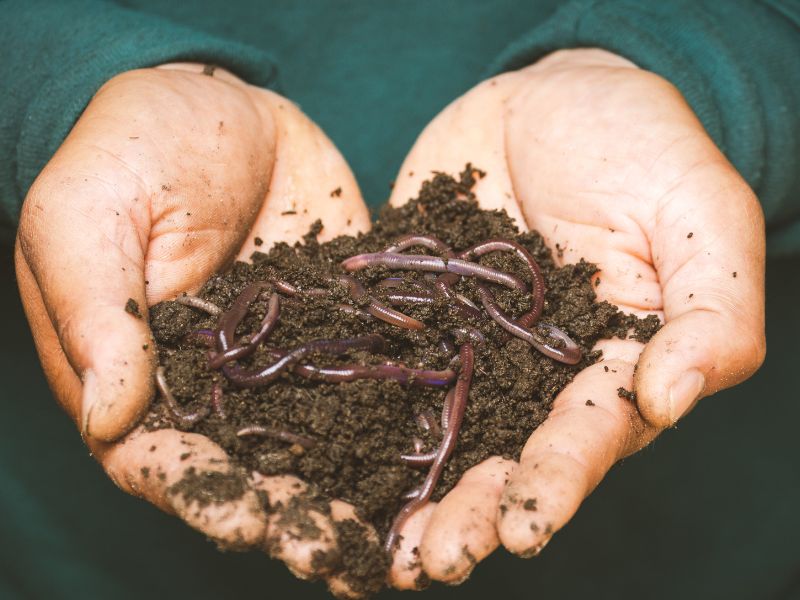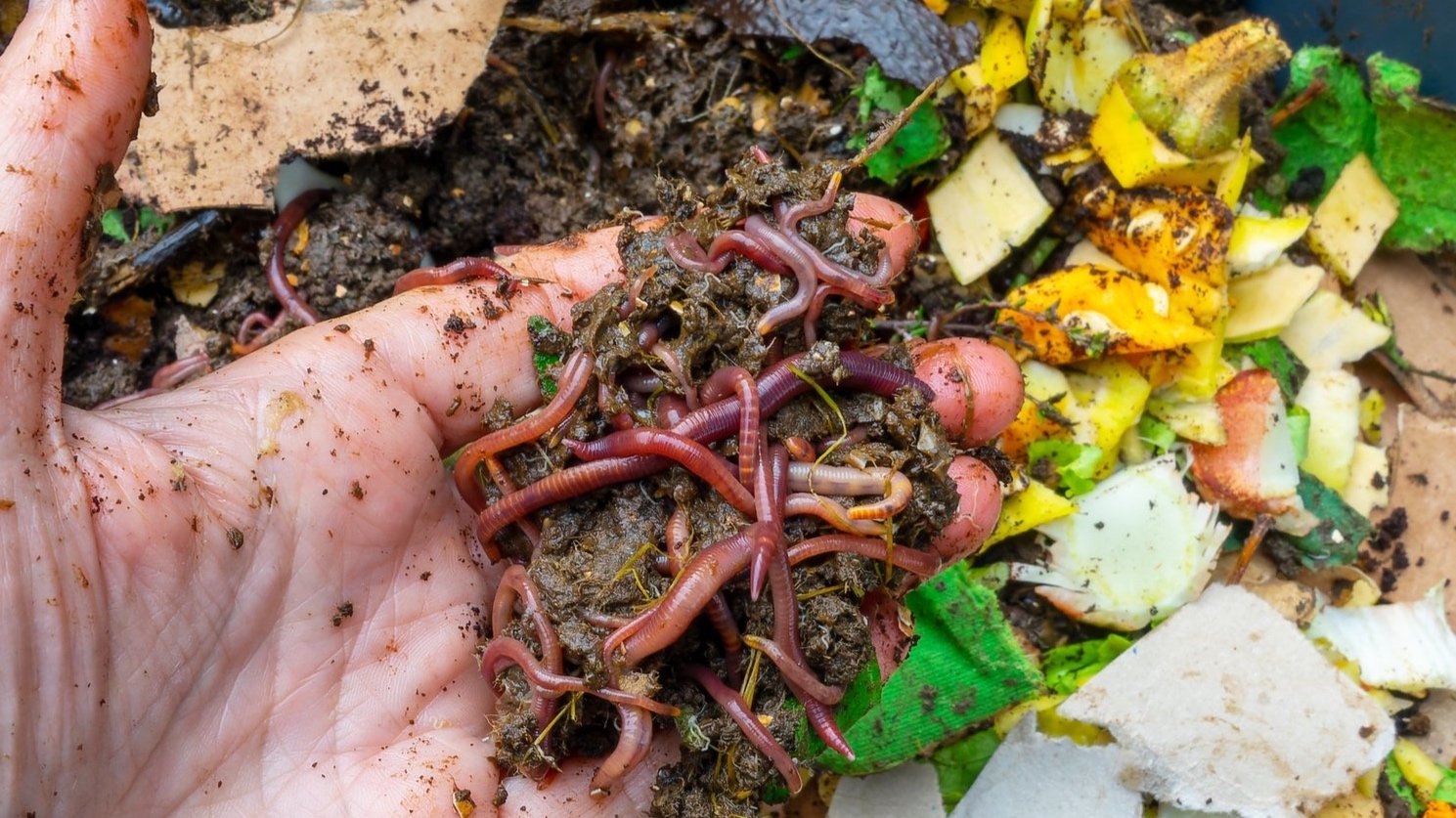Comprehending the Conveniences of Red Wiggler Composting: Exactly How This Efficient Technique Transforms Organic Waste Into Nutrient-Rich Dirt Amendments
Red Wiggler composting, employing the varieties Eisenia fetida, provides a compelling technique to organic waste administration, converting kitchen area scraps and yard debris right into valuable dirt modifications. This approach not only improves dirt fertility yet also addresses pressing environmental concerns, including land fill waste decrease and greenhouse gas discharges.
What Are Red Wigglers?
Red wigglers, medically referred to as Eisenia fetida, are a varieties of earthworm that play a critical role in vermicomposting systems. These worms are defined by their reddish-brown shade, fractional bodies, and a distinct ability to thrive in organic-rich atmospheres, making them excellent for composting applications - Red Wiggler Composting. Unlike their garden-dwelling equivalents, red wigglers favor to live in the top layers of dirt, where rotting matter is plentiful
Generally measuring in between 3 to 4 inches in length, red wigglers have a high reproductive rate, allowing them to multiply swiftly under optimal problems. They have an unique digestion system that enables them to process natural waste efficiently, transforming it into nutrient-rich spreadings, which are extremely advantageous for plant development.
Their tolerance to differing wetness degrees and temperature level varies further boosts their utility in vermicomposting configurations, making them a preferred selection among composting fanatics. Furthermore, red wigglers are cardio microorganisms, which necessitates a well-aerated composting environment, making certain efficient decay. Comprehending the biological qualities and habits of red wigglers is crucial for enhancing their usage in lasting waste management methods.

Benefits of Vermicomposting
Harnessing the power of vermicomposting offers a wide variety of environmental and agricultural advantages. It substantially lowers natural waste in land fills, thereby reducing methane discharges, a powerful greenhouse gas. By drawing away food scraps and backyard waste to vermicomposting, we sustain a more sustainable waste monitoring system.
In addition, vermicomposting boosts dirt health. The spreadings generated by red wigglers are abundant in essential nutrients, microbes, and enzymes, enhancing dirt framework and fertility. This nutrient-rich amendment promotes robust plant growth and enhances water retention, decreasing the requirement for chemical fertilizers.
In addition, vermicomposting fosters biodiversity in the soil environment. The introduction of helpful microbes from worm castings aids in disease suppression and nutrient cycling, creating a much healthier setting for plants.
Financially, vermicomposting reduces the costs associated with chemical inputs and waste disposal. Garden enthusiasts and farmers can grow top notch fruit and vegetables at reduced expenses, adding to food safety and sustainability.
Exactly How to Beginning Composting
Beginning a composting venture can be a straightforward and rewarding procedure. To start, select a suitable location that is well-drained and receives partial sunshine. This will help keep a well balanced temperature, essential for the composting procedure. Next, choose a garden compost bin or create a marked location in your garden, guaranteeing it is conveniently available for including materials and harvesting garden compost.
Gather natural products such as kitchen scraps, backyard waste, and shredded paper. Objective for a well balanced mix of 'eco-friendly' products, high in nitrogen (e.g., fruit scraps, coffee grounds), and 'brownish' products, abundant in carbon (e.g., dried out leaves, cardboard) A proportion of roughly 2:1 environment-friendly to brown products is ideal.
Beginning layering your materials, making sure adequate air flow by transforming the pile regularly. This promotes cardiovascular disintegration, decreasing smells and speeding up up the process. Display moisture degrees; the garden compost should seem like a moist sponge yet not overly damp.
Nutrient Profile of Vermicompost
Composting, especially with red wigglers, generates a nutrient-rich item known as vermicompost. This organic change is identified by its high concentration of essential nutrients, making it an indispensable source for horticulture and farming. Vermicompost typically includes raised degrees of macronutrients such as potassium, nitrogen, and phosphorus, which are crucial for why not try here plant growth. Furthermore, it supplies trace elements like calcium, magnesium, and iron, fostering robust plant advancement and boosting dirt health and wellness.
The microbial task existing in vermicompost better improves its profile, introducing advantageous germs and fungis that promote vitamins and mineral schedule and uptake in plants. This biological part help in reducing plant diseases and boosting dirt framework, causing improved water retention and oygenation.

Environmental Effect of Composting
The environmental effect of composting, specifically through the usage of red wigglers, is profound and complex. This method substantially reduces the quantity of natural waste sent to garbage dumps, which subsequently lessens greenhouse gas discharges, specifically methane-- a potent contributor to environment change. By diverting natural products from landfills, red wiggler composting not just aids mitigate environmental deterioration yet also promotes sustainable waste monitoring techniques.

In addition, composting adds to carbon sequestration, as the procedure records co2 from the environment and stores it in the soil. This natural process aids in combating climate adjustment while improving the dirt - Red Wiggler Composting. On the whole, red wiggler composting offers a feasible, green remedy for waste administration and environmental sustainability, promoting browse around this web-site healthier ecological communities and an extra lasting future
Final Thought
In conclusion, Red Wiggler composting offers as an effective method for converting organic waste into useful soil changes. The process not just enhances soil fertility and framework however additionally alleviates environmental problems associated with waste disposal.
Red Wiggler composting, utilizing the species Eisenia fetida, provides an engaging method to natural waste management, transforming cooking area click scraps and lawn particles into useful dirt amendments. Unlike their garden-dwelling equivalents, red wigglers prefer to occupy the top layers of soil, where rotting matter is bountiful.
The castings generated by red wigglers are abundant in necessary nutrients, microbes, and enzymes, improving soil framework and fertility. The nutrient-rich results of red wiggler activity enhance dirt framework, increase water retention, and promote biodiversity within the dirt ecological community.In final thought, Red Wiggler composting offers as a reliable technique for transforming natural waste into important dirt amendments.